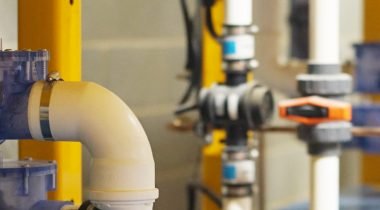Vacuum sewerage systems utilise vacuum pressure and gravity for the collection, conveyance and disposal of sewage through a piping network that can be routed above ground.
Components
- Waste Collection Points (e.g. toilets, sinks, showers, urinals, & drinking fountains) are connected to the main piping network via a vacuum interface valve which opens to allow waste to pass from the fixture in to the piping network
- A Vacuum Drainage Piping Network is a closed piping network which is maintained under continuous vacuum pressure and is usually either standard pressure rated PVC, HDPE or stainless steel. It consists of ‘risers’ or ‘droppers’ which transport waste vertically from the point of origin to horizontal mains and branches leading to the Vac Centre.
- A Vacuum Generating Station (‘Vac Centre’) includes the vacuum pumps that create a vacuum in the piping network and storage tanks that collect and discharge the waste into the sewer system. Avac offer a range of pre-fabricated Vac Centres (The Championship Series) or alternatively can design and size a customised system to suit specific project needs.
Benefits
Flexibility In Design & Layout Of Fixtures And Equipment
Vacuum drainage piping can be routed where most convenient including overhead or through voids in ceiling spaces, eliminating the need for under slab piping and providing owners and designers unlimited freedom to locate fixtures or equipment throughout the facility.
Reduced Water Usage & Sewer Output
Avac vacuum toilets use as little as 0.7 litres of water per flush, providing a significant reduction in annual water and sewage costs when compared to conventional toilets. This is of great benefit anywhere, especially in areas where water conservation is important, or in areas where sewer mains or treatment facilities are already heavily impacted.
Reduced Piping Requirements
Pipe sizes in a vacuum drainage system are significantly reduced – in most cases up to 50%. And because the system is closed, there is no requirement for venting and associated roof penetrations. In addition, unlike conventional slope requirements of gravity drainage systems, vacuum system drainage piping requires minimal fall that can be recovered at intervals and can be conveniently routed around obstacles.








